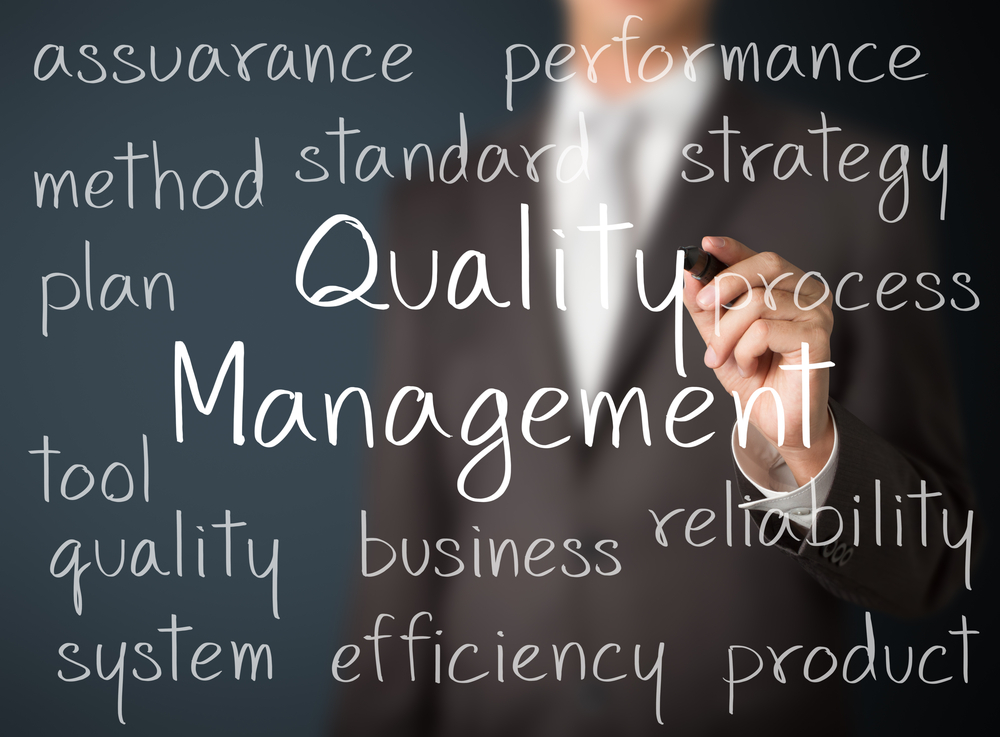The 10 Key Chief Quality Officer Job Responsibilities for Medical Technology

1. Propagate quality responsibilities
The position of Chief Quality Officer (CQO) should be a permanent and dedicated role in small medical technology businesses. A CQO provides strategic quality management vision for product development and manufacturing. He or she ensures that quality assurance is an inherent part of product development pipelines as well as an organisation’s corporate culture. The responsibility extends beyond implementing a quality management system (QMS), writing manuals, filing for regulatory approval and performing audits. A CQO ties in QMS policies, SOPs, regulatory requirements and enforcement into every aspect of an organisation’s business process. He or she constantly drives, monitors and improves compliance by using quality-at-source methodologies and applying appropriate key performance indicators.
2. Align quality governance with business objectives
The CQO must ensure that quality policies, procedures, framework and activities promote the accomplishment of business goals. A QMS that runs counter to overall organisational and commercial objectives may pose unexpected and costly barriers to progress. Disparately established QMS has often enough been misconstrued as a “show-stopper”. It is, therefore, incumbent upon the CQO to understand the larger organisational strategies. He or she should then chart a quality roadmap that enables the organisation to realise these goals without compromising on compliance.
3. Use quality data to control and improve processes
The CQO must set the metrics to measure quality performance in all developmental and manufacturing processes. The higher the level of risk or complexity of a process, the more data and statistical analysis are required to understand the process capabilities, drifts as well as its failure modes. In this respect, the CQO is responsible for setting technical specifications, functional targets, acceptance limits and error margins aimed to minimise variations, eliminate defects and improve product quality.
4. Formulate risk management strategies
The amount of testing and validation required for a medical product depends on its risk level. The CQO must establish a risk grading and mitigation system for every product-related process. At the core of risk management is the ability to perform effective failure mode and root-cause analyses to fully understand performance characteristics under various manufacturing and clinical environments as well as user habits. The CQO should lead problem-solving teams to remove these risks, optimise performance and apply robust testing strategies to detect deviations.
5. Standardise procedures
Standardisation is vital in ensuring the reproducibility and repeatability of performance specifications. It provides a common ground and baseline template on how a certain process should be executed to achieve an acceptable outcome. The CQO must ensure that processes (especially process changes) have been analysed and verified before they are standardised. Standardisation serves as an important tool to harmonise multi-site QMS framework, specify requirements clearly, and to assess process differences at sub-contractor locations as well as their related risks.
6. Master complaints intelligence
Market complaints and customer feedback provide valuable insight on the performance capabilities and failure modes of a product. The CQO must be able to report on the types and frequency of complaints specific to certain markets or customer types. He or she should be knowledgeable in solutions that had worked or failed, and able to advise effectively on possible product improvement directions, whether the current state-of-technology would be successful in certain markets, and the type of user education or information required to prevent adverse events.
7. Establish regulatory partnerships in different jurisdictions
This is especially useful for small businesses with limited regulatory resources to enter various markets. By partnering with regulatory consultants in different countries, the CQO ensures there is local representation for regulatory issues. Not only does this enable efficient marketing applications to regulatory authorities, but also set unbroken lines of communication and quicker response for urgent issues, such as complaints handling. Such an arrangement will also remove the burden of regulatory responsibilities from sales representatives.
8. Lead the product and parts serialisation exercise
Having a robust product and parts serialisation system is vital in mistake-proofing the bill of materials. Manufacturing and supply chain processes rely heavily on the correct product master data. Whereas the Chief Operating or Technical Officer (COO or CTO) is responsible for providing the technical specifications, the CQO must ensure that product serialisation systems offer maximum traceability, enables counterfeit protection and supports targeted recall activities.
9. Drive continuous improvement
Continuous improvement is part of the medical device QMS obligation. The CQO must be able to map out product continuous improvement plans and priorities based on data obtained from various sources such as risk management and complaints investigation. He or she is responsible for managing improvement committees and providing the appropriate tools or methodologies to accomplish this such as, Kaizen and Lean Six Sigma.
10. Create process structures
Process-based QMS is effective in building a quality-conscious culture throughout the organisation. The CQO is responsible for providing a process structure that incorporates quality points that become intrinsically linked to the process itself. Where re-structuring of existing processes is required, he or she must work with key stakeholders to manage changes and communicate new quality responsibilities to process owners.
